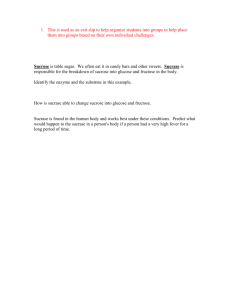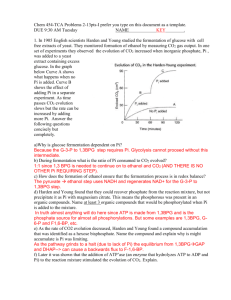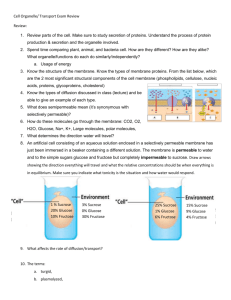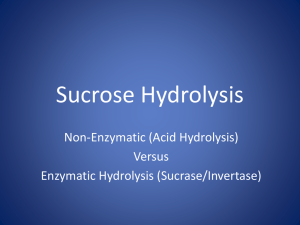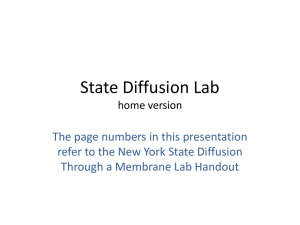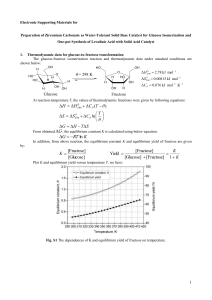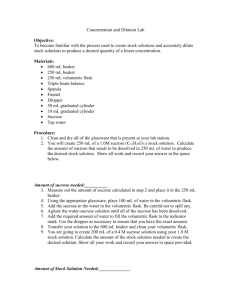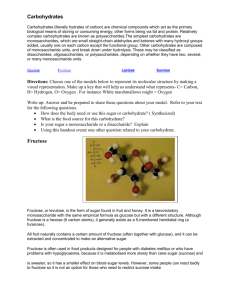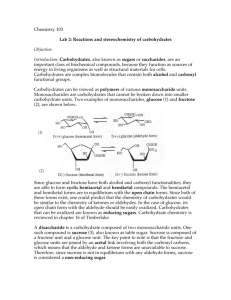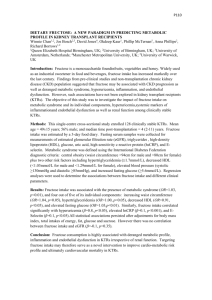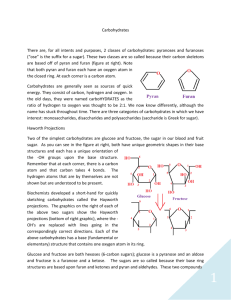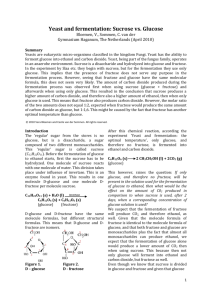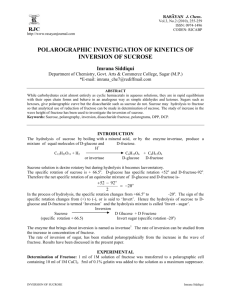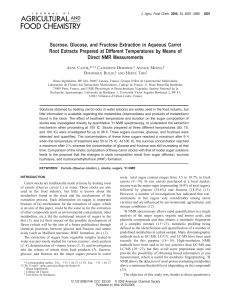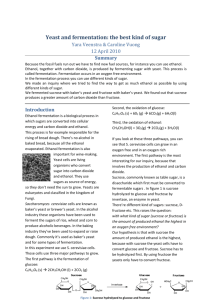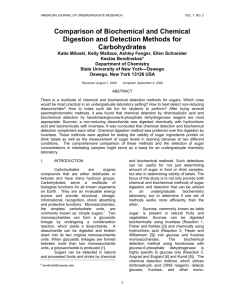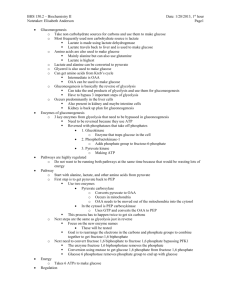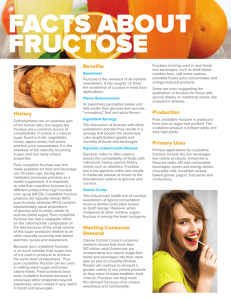Practice osmosis/diffusion question
advertisement
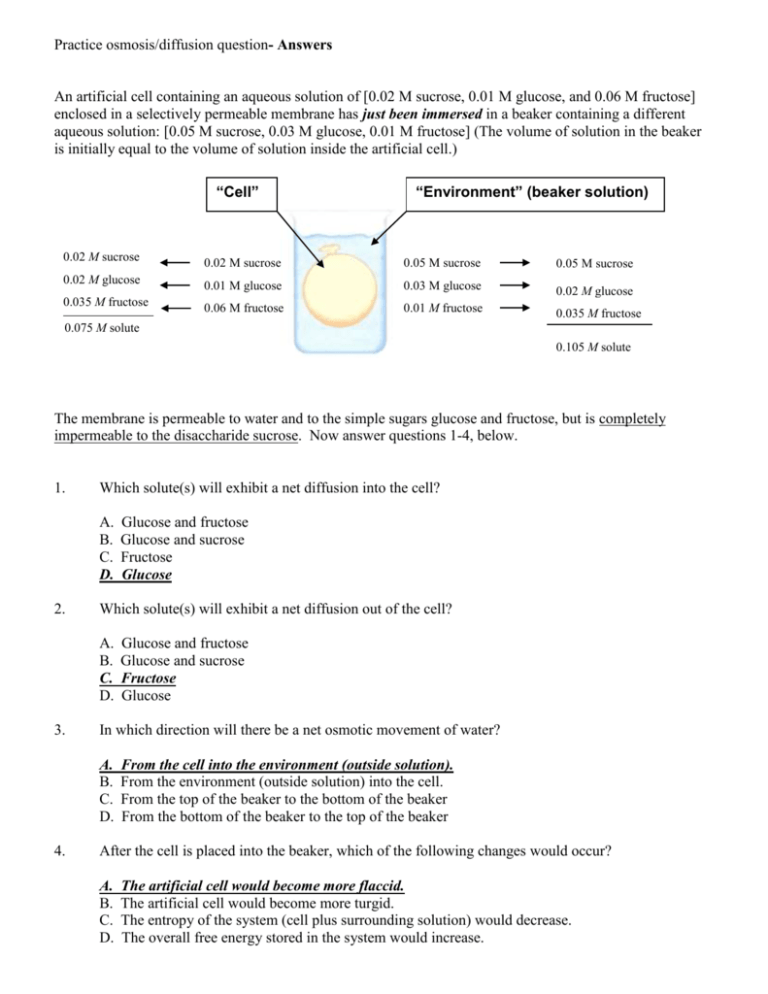
Practice osmosis/diffusion question- Answers An artificial cell containing an aqueous solution of [0.02 M sucrose, 0.01 M glucose, and 0.06 M fructose] enclosed in a selectively permeable membrane has just been immersed in a beaker containing a different aqueous solution: [0.05 M sucrose, 0.03 M glucose, 0.01 M fructose] (The volume of solution in the beaker is initially equal to the volume of solution inside the artificial cell.) “Cell” “Environment” (beaker solution) 0.02 M sucrose 0.02 M sucrose 0.05 M sucrose 0.05 M sucrose 0.02 M glucose 0.01 M glucose 0.03 M glucose 0.02 M glucose 0.035 M fructose 0.06 M fructose 0.01 M fructose 0.035 M fructose 0.075 M solute 0.105 M solute The membrane is permeable to water and to the simple sugars glucose and fructose, but is completely impermeable to the disaccharide sucrose. Now answer questions 1-4, below. 1. Which solute(s) will exhibit a net diffusion into the cell? A. B. C. D. 2. Which solute(s) will exhibit a net diffusion out of the cell? A. B. C. D. 3. Glucose and fructose Glucose and sucrose Fructose Glucose In which direction will there be a net osmotic movement of water? A. B. C. D. 4. Glucose and fructose Glucose and sucrose Fructose Glucose From the cell into the environment (outside solution). From the environment (outside solution) into the cell. From the top of the beaker to the bottom of the beaker From the bottom of the beaker to the top of the beaker After the cell is placed into the beaker, which of the following changes would occur? A. B. C. D. The artificial cell would become more flaccid. The artificial cell would become more turgid. The entropy of the system (cell plus surrounding solution) would decrease. The overall free energy stored in the system would increase.
